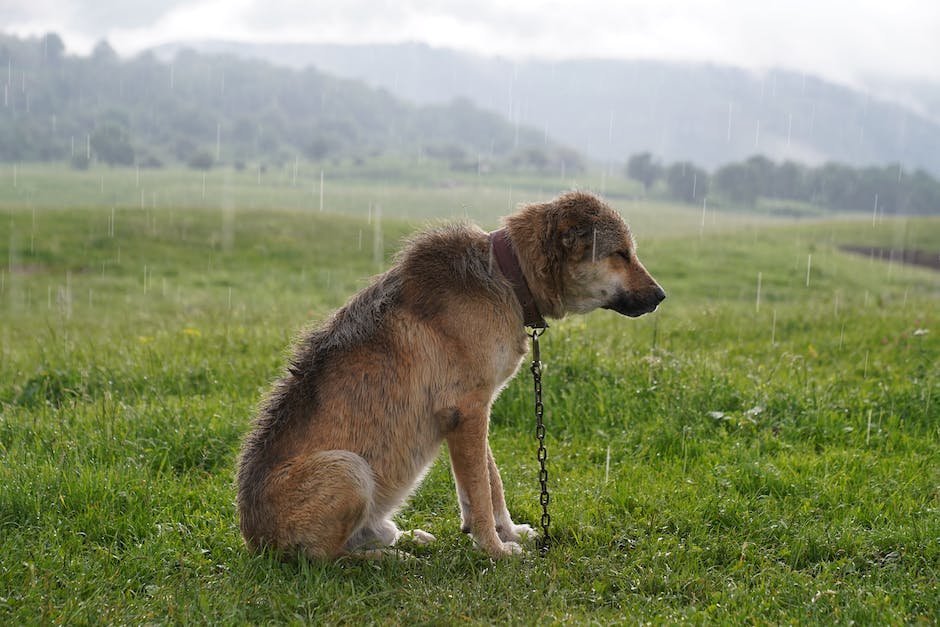Do you ever wonder how our four-legged companions possess the power to inspire, console, and uplift us in ways beyond comprehension? Dogs, with their boundless love and unwavering loyalty, have an uncanny ability to transform our lives. However, their extraordinary capabilities do not solely revolve around being our trusted companions; they can also become invaluable allies for individuals seeking mobility assistance. In this article, we delve into the intricate world of training dogs for mobility assistance, unraveling the unwritten language that forms an unbreakable bond fostering independence and freedom for those in need.
Table of Contents
- Enhancing Independence: Training Your Dog for Mobility Assistance
- Bonding through Training: Establishing a Strong Connection with Your Dog
- Tailoring Training Techniques: Customizing Methods for Your Dog’s Unique Needs
- Mastering the Basics: Teaching Essential Commands for Mobility Assistance
- Building Confidence: Gradually Introducing Complex Tasks for Enhanced Assistance
- Q&A
- To Conclude

Enhancing Independence: Training Your Dog for Mobility Assistance
Why Train Your Dog for Mobility Assistance?
Having a dog that can assist with mobility tasks is not only helpful, but it can also enhance your independence and overall quality of life. These specially trained dogs are capable of providing support and assistance to individuals with limited mobility, allowing them to carry out daily activities with ease and confidence.
Benefits of Mobility Assistance Dogs
- Increased freedom: With a well-trained mobility assistance dog by your side, you can navigate your surroundings more efficiently and with less reliance on others. They can help with tasks such as opening doors, fetching items, or even pressing buttons for you.
- Improved safety: A trained dog can act as a stability aid, providing balance and support while walking or standing. They are trained to help prevent falls and can retrieve objects that may otherwise put you at risk.
- Emotional support: Not only do mobility assistance dogs provide physical support, but they can also offer emotional comfort during challenging times. Their presence can alleviate stress and anxiety, making everyday life more manageable.
Training Your Dog for Mobility Assistance
Training a dog for mobility assistance requires time, patience, and the guidance of a professional dog trainer who specializes in this area. The training includes teaching your dog specific commands and tasks that are tailored to your individual needs. These may include:
- Retrieving and carrying objects
- Opening and closing doors
- Assisting with balance and stability
- Turning lights on and off
- Alerting to sounds or emergencies
- And more, depending on your unique requirements
Through consistent training and positive reinforcement, your dog can become a reliable and valuable companion, ready to assist you in your day-to-day life. Remember to reward your dog for their achievements and practice regularly to maintain their skills.

Bonding through Training: Establishing a Strong Connection with Your Dog
A strong bond between a dog and its owner is built on trust, understanding, and effective communication. Training your dog is not just about obedience; it is a wonderful opportunity to strengthen the connection between you and your furry companion. Here are some essential tips to help you establish a solid bond through training:
- Positive Reinforcement: Focus on rewarding good behavior rather than punishing mistakes. Praising your dog with treats, toys, or verbal praise when they demonstrate the desired behavior will motivate them to repeat it. This positive reinforcement builds trust and fosters a sense of cooperation between you and your dog.
- Patience and Consistency: Dogs need time to understand and process commands. Be patient and consistent in your training methods, using the same cues, gestures, and rewards each time. Consistency helps your dog recognize patterns and anticipate what is expected of them, deepening their connection to you.
- Engage in Play: Playtime is not just for fun; it is also an excellent way to bond with your dog. Incorporate training exercises into play sessions to make learning enjoyable. For example, hide treats and encourage your dog to find them using commands like ”Search” or “Find.” This interactive play strengthens your bond and keeps training sessions exciting for both of you.
Remember, training is an ongoing process that requires time and effort. Embrace each training session as an opportunity to deepen your connection with your dog. By using positive reinforcement, showing patience, and engaging in play, you will establish a strong bond that will last a lifetime.

Tailoring Training Techniques: Customizing Methods for Your Dog’s Unique Needs
When it comes to training your furry companion, there is no one-size-fits-all approach. Just like humans, dogs have unique personalities, learning styles, and needs. That’s why tailoring training techniques to fit your dog’s specific requirements is essential for successful and effective training.
One of the first steps in customizing your training methods is understanding your dog’s temperament. Is your dog naturally energetic and playful, or more calm and reserved? This knowledge will help you choose the right activities and exercises to keep them engaged and motivated. Additionally, considering any specific fears or anxieties your dog may have will allow you to address them appropriately during training.
Another key factor to consider is your dog’s age and breed. Puppies, for example, have shorter attention spans and require shorter training sessions with lots of positive reinforcement. On the other hand, older dogs may need more patience and time to learn new commands. Furthermore, certain breeds have unique characteristics and tendencies, so tailoring training techniques to suit their specific needs can greatly enhance the training process.
- Vary your training techniques: Dogs, just like humans, can get bored with repetitive activities. Incorporate a variety of training methods such as positive reinforcement, clicker training, and obedience classes to keep your dog interested and engaged.
- Set realistic goals: Every dog is different and learns at their own pace. It’s important to set achievable goals to prevent frustration, both for yourself and your furry friend. Celebrate small victories along the way to maintain motivation.
- Modify techniques as needed: Pay attention to how your dog responds to certain methods. If a technique isn’t yielding results or seems to stress your dog, be flexible and try a different approach. Remember, training should be a positive and enjoyable experience for both of you.
By customizing your training methods, you’re ensuring that your dog receives the individualized attention they need to succeed. Remember, there’s no magic formula for training, but with your dedication and a tailored approach, you’ll create a lifelong bond with your four-legged companion based on trust, understanding, and effective communication.
Mastering the Basics: Teaching Essential Commands for Mobility Assistance
When it comes to helping individuals with mobility challenges, mastering the basics is crucial. Teaching essential commands not only empowers those in need of mobility assistance, but also allows them to regain a sense of independence and confidence in their day-to-day lives.
So, what are these essential commands that can make a significant difference? Let’s take a look:
- Forward: One of the most fundamental commands, teaching individuals to move forward is essential for navigating through different environments. Whether it’s walking, using a wheelchair, or utilizing other mobility aids, mastering this command lays the foundation for further mobility.
- Stop: Equally important as moving forward is the ability to stop in a safe and controlled manner. Teaching individuals to halt their movement when necessary ensures their safety and allows them to navigate various obstacles confidently.
- Turn: Turning is a command that significantly improves mobility. By teaching individuals the necessary skills to make precise turns, they can maneuver through tight spaces, change directions freely, and gain a greater level of control over their movement.
Mastering these essential commands is just the beginning. As individuals become proficient in the basics, they can then progress to more advanced commands that further enhance their mobility and independence. By focusing on these fundamental skills, we can make a meaningful difference in the lives of those with mobility challenges.
Building Confidence: Gradually Introducing Complex Tasks for Enhanced Assistance
Developing confidence is a step-by-step process that requires patience and strategic planning. By gradually introducing complex tasks, individuals receive enhanced assistance that nurtures their growth and self-assurance. This approach allows them to build upon their existing skills and gradually push their limitations, resulting in a boost in confidence levels.
In order to implement this approach effectively, it is important to consider the following strategies:
- Break down tasks: Breaking complex tasks into smaller, more manageable steps enables individuals to focus on one aspect at a time. By doing so, they can gradually build their expertise and confidence in each component before tackling the entire task.
- Provide clear guidance: Offering clear and concise instructions ensures individuals understand the expectations and guidelines for each step. This guidance helps reduce uncertainty and instills confidence in their abilities to complete the task successfully.
- Offer continuous support: Along the journey of introducing complex tasks, it is essential to provide ongoing support and encouragement. This support can come in the form of constructive feedback, mentoring, or even additional resources to assist individuals in overcoming challenges and boosting their self-assurance.
By following these strategies, individuals can gradually develop their skills, strengthen their self-belief, and become more confident in tackling complex tasks. Remember, building confidence is a journey that requires patience and the right support system.
Q&A
How can training your dog for mobility assistance benefit you?
Training your dog for mobility assistance can offer you increased independence, as they can help with tasks such as opening doors, picking up objects, and even assisting with balance. It also provides emotional support and companionship.
What are some basic commands that are important to teach your mobility assistance dog?
Teaching your dog commands like “sit,” “stay,” and “heel” is crucial for their safety and your convenience. In addition, training them to recognize specific objects by name, such as keys or a medicine pouch, can be incredibly helpful.
What are the best breeds for mobility assistance?
While any breed can potentially be trained for mobility assistance, some breeds are naturally more inclined and capable. Labrador Retrievers, Golden Retrievers, and German Shepherds are commonly chosen due to their intelligence, size, and willingness to please.
How long does the training process usually take?
The training process for a mobility assistance dog can vary depending on the individual dog and the tasks they are being trained for. It generally takes several months to a year or more of consistent and dedicated training to fully prepare a dog for mobility assistance work.
Can older dogs be trained for mobility assistance?
Yes, older dogs can be trained for mobility assistance. While it might take a bit longer and require more patience, it is certainly possible to teach them new commands and tasks. However, it’s important to consider their physical health and limitations when choosing and training an older dog.
Is professional training necessary for a mobility assistance dog?
Professional training is highly recommended for training a mobility assistance dog. They can provide expertise, guidance, and structured programs tailored to your specific needs. It is important to seek out qualified trainers who specialize in mobility assistance training.
Are there any legal requirements for using a mobility assistance dog?
In many countries, using a trained mobility assistance dog is protected by law. However, specific regulations may vary, so it’s crucial to familiarize yourself with local laws and ensure your dog meets any required certifications or registrations.
What ongoing responsibilities come with having a mobility assistance dog?
Owning a mobility assistance dog requires consistent care, including regular exercise, grooming, and medical attention. Additionally, ongoing training and practice sessions are necessary to maintain their skills and reinforce good behavior. Remember, they are more than just a working dog; they are your loyal companion!
To Conclude
As we conclude our journey through training your dog for mobility assistance, we hope to have inspired you to embark on a remarkable adventure with your four-legged companion. Together, you and your canine friend have discovered the unique potential of teamwork, compassion, and unwavering dedication.
Just like a beautifully choreographed dance, your journey towards transforming your furry bundle of joy into a reliable mobility assistant has proven that even the wildest dreams can be achieved with patience and perseverance.
From those initial tentative steps to your dog confidently reaching for your crutches, you have witnessed remarkable growth, not only in your loyal companion but also within yourself. Through the highs and lows, the tears of frustration, and the moments of uncontainable joy, you have experienced the true power of the bond between human and canine.
As you navigate the intricacies and complexities of training, always remember that each step forward, no matter how small, contributes to the grand tapestry of success. You are not alone on this incredible journey; a vast community of passionate dog lovers stands beside you, ready to offer guidance and support whenever you need it.
Though this article may mark the end of our written guidance, it is merely a beginning. An open door to a world of boundless possibilities awaits you, where your dog’s talents will shine brighter than ever. Together, you and your loyal companion can conquer any challenge that comes your way.
So, as you and your furry partner prepare to embark on this new chapter, we wish you every ounce of joy, success, and fulfillment possible. May your home be filled with wagging tails, triumphant barks, and dreams realized. Remember, with love, patience, and understanding, the partnership between you and your dog has no limits.
Harness the power within the depths of your hearts and take on the world – united in triumph, boundless in spirit, and forever grateful for the joy that our incredible four-legged friends bring to our lives.
As an affiliate, my content may feature links to products I personally use and recommend. By taking action, like subscribing or making a purchase, you’ll be supporting my work and fueling my taco cravings at the same time. Win-win, right?
Want to read more? Check out our Affiliate Disclosure page.